Herb Gardening : How to Grow Herb Plants Indoors?
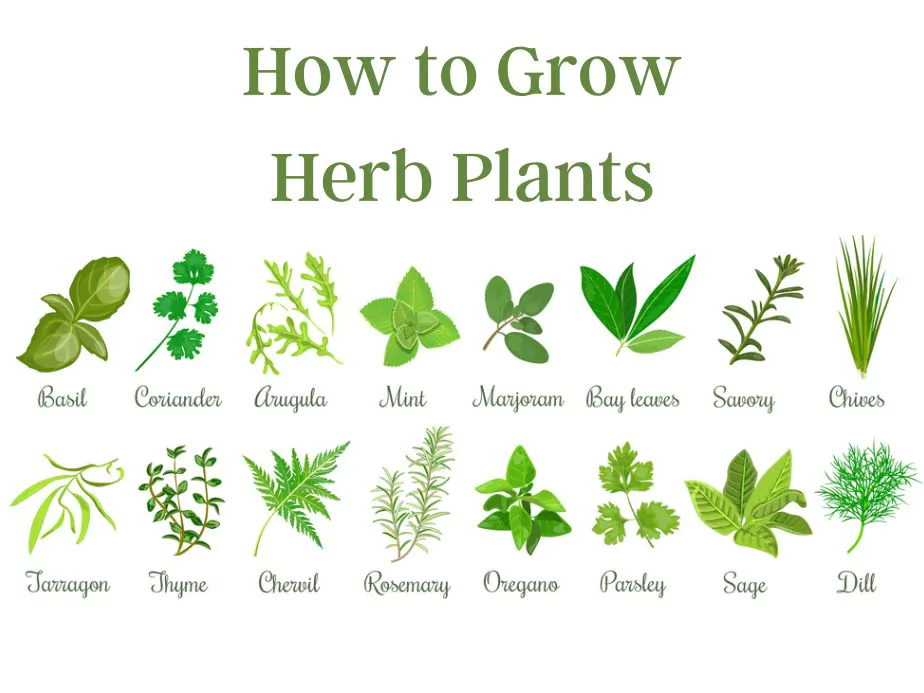
Herb plants and trees are widely grown in gardens for their culinary, medicinal, and aromatic properties. Growing your own garden with perennial herbs not only adds flavor and fragrance to your food, but also offers a healthy, cost-effective, and eco-friendly alternative to store-bought herbs. In this blog, we will discuss how to grow a variety of herb plants, with herbs including tulsi, mint, thyme, rosemary, oregano, and basil, and how to use them for culinary and medicinal purposes.
1 Tulsi Plant
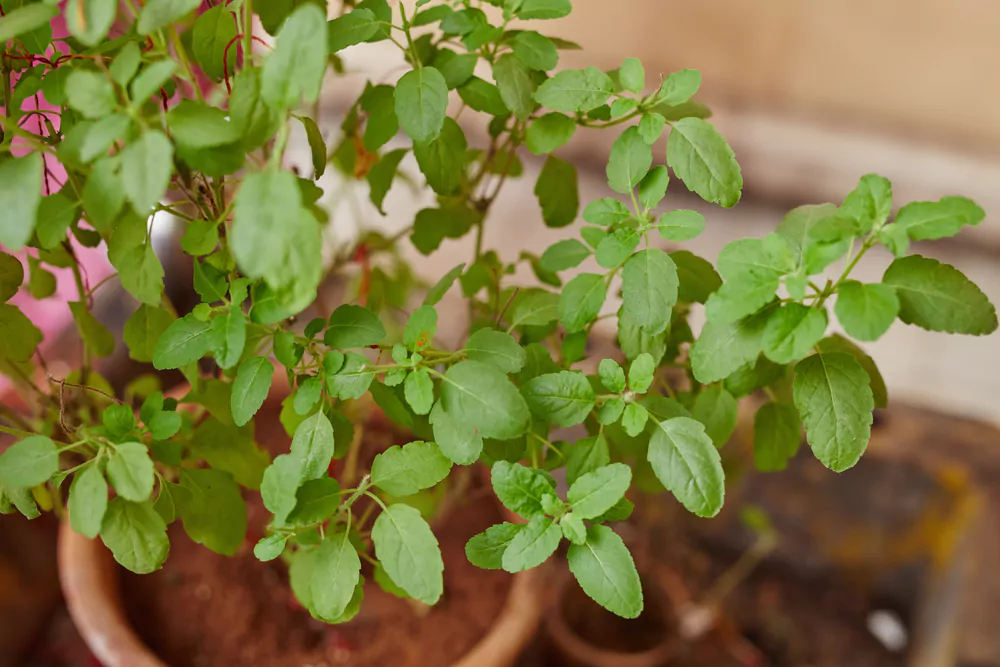
The tulsi plant, also known as holy basil, is a member of the mint family and is commonly grown in India for its fragrant leaves and its green woody stems. This perennial herb is revered for its medicinal properties, which include treating respiratory ailments, fever, and diarrhoea. To grow a Tulsi plant in your kitchen garden, follow these steps:
- Plant the seeds in a small pot filled with well-draining soil, and water them regularly. Tulsi seeds require warmth and sunlight to germinate, so place the pot in a sunny spot.
- When the seedlings have grown from seed, to about 2 inches tall, transplant them to a larger pot or directly into your garden.
- Tulsi plants prefer well-drained soil and at least 6 hours of sunlight per day. Water the plants regularly, keeping the soil consistently moist but not overly saturated.
- To encourage bushy growth, pinch off the tips of the stems and remove any flowers that appear. This will also help to prolong the life of the plant.
- Tulsi can be used fresh or dried in teas, fruit salads, and as a spice in various dishes.
2 Mint Family

Mint plants are part of the Lamiaceae family, which includes other plants and herbs such as basil, rosemary, and oregano. They are popular for their culinary use in flavoring foods food, and drinks, and for adding a fresh taste to salads and fruit dishes.
- Mint plants can be grown from seeds or cuttings. Plant them in well-draining soil, in a pot, or directly in your garden. Mint prefers partial to full sunlight and consistent watering.
- Mint plants have a tendency to spread, so it’s essential to keep them contained. Plant them in a pot or a designated area in your garden to prevent them from taking over other plants.
- Harvest mint leaves regularly to encourage new growth. Use fresh or dried leaves for cooking, teas, and garnishing.
3 Thyme
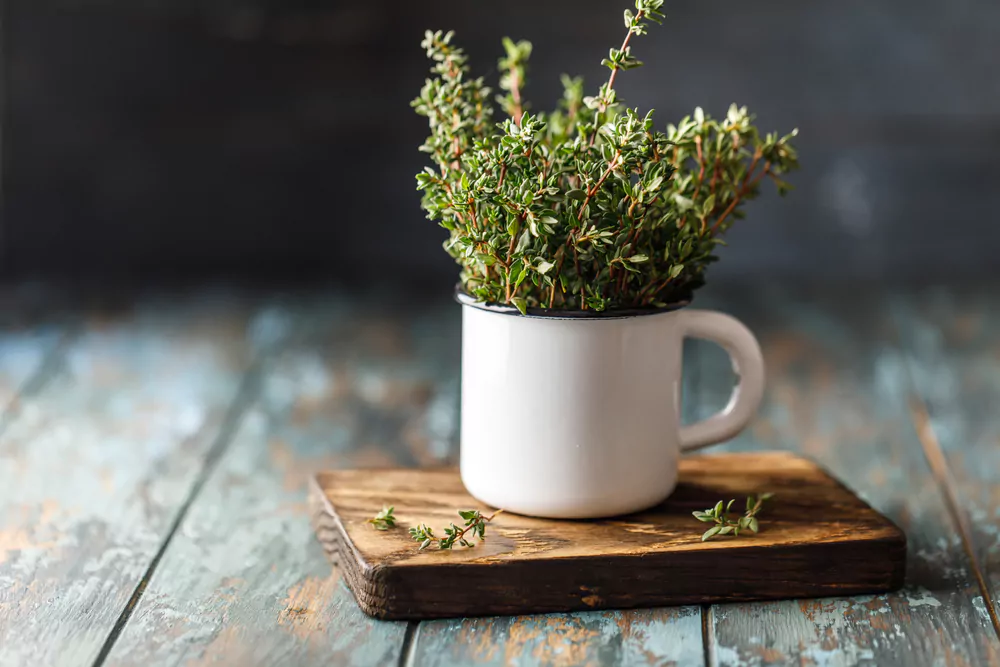
Thyme is a perennial herb with small, fragrant leaves and green woody stems. It is widely used in cooking for its aromatic flavor and as a medicinal plant for its antiseptic properties.
- Thyme can be grown from seeds, cuttings, or by dividing an established plant. Plant thyme in well-draining soil with full sunlight, and water regularly.
- Thyme plants are low-growing and have a creeping habit, making them an excellent choice for ground cover or as a border plant in your garden.
- Harvest thyme leaves before the plant flowers for the herb plants’ best flavor. Use fresh or dried leaves in soups, stews, and meat dishes.
4 Rosemary
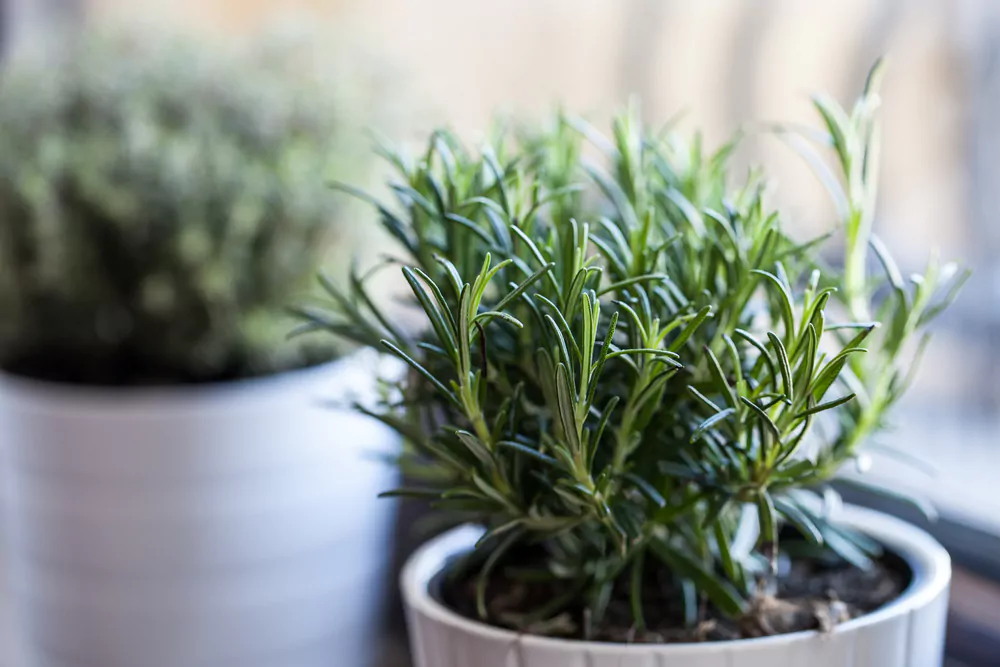
Rosemary is a perennial herb with needle-like leaves and woody stems. It is a member of the mint family and is widely used in cooking for its strong, aromatic flavor.
- Grow rosemary from seeds, cuttings, or by dividing an existing plant. Plant in well-draining soil with full sunlight, and water regularly.
- Rosemary plants can grow quite large, so provide them with plenty of space in your garden. Prune regularly to maintain the desired shape and size.
- Harvest rosemary leaves as needed, but avoid taking more than one-third of the plant at once. Use fresh or dried leaves in various dishes, such as roasted meats, vegetables, and bread.
5 Oregano

Oregano is a perennial herb that is a member of the mint family and is an herb commonly used in cooking for its strong, aromatic flavor. It is widely grown in kitchen gardens and is an essential ingredient in many Italian, Greek, and Mexican food dishes.
- Oregano can be grown from seeds, cuttings, or by dividing an established plant. Plant in well-draining soil with full sunlight, and water regularly.
- Oregano plants prefer slightly alkaline soil with a pH of 6.0 to 7.0. They are drought-tolerant and require less water than other herbs, making them suitable for low-maintenance gardens.
- Harvest oregano leaves long before the plant flowers for the best flavor. Use fresh or dried leaves in pasta sauces, pizzas, and salads.
6 Basil
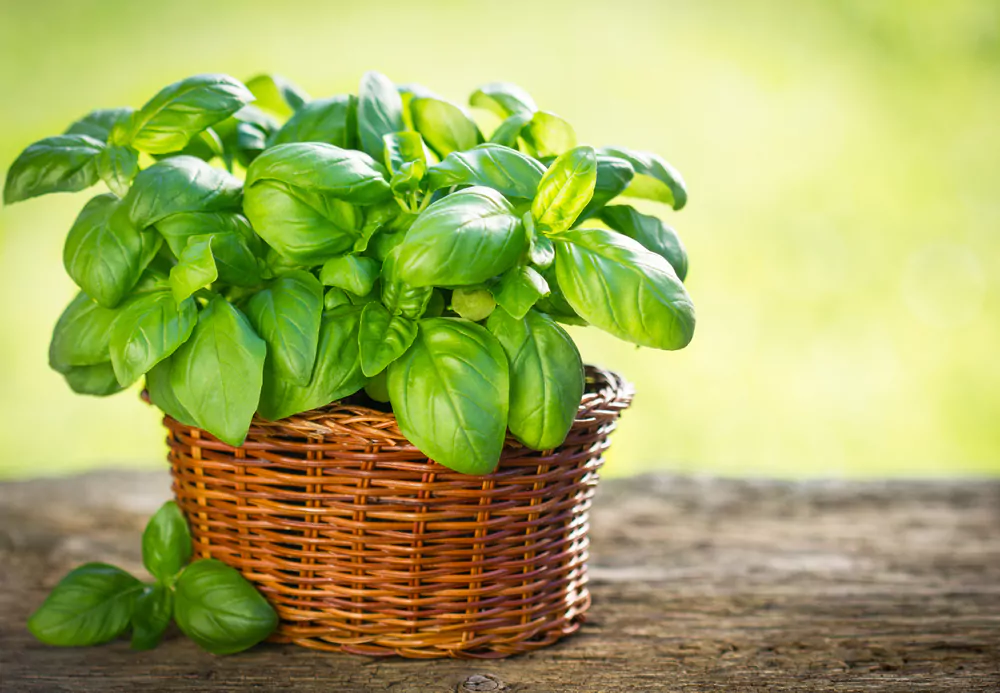
Basil is an annual herb with soft green leaves that is a member of the mint family. It is widely grown for its fragrant, aromatic leaves and is commonly used in salads, pesto, and pasta dishes.
- Basil can be grown from seeds or cuttings—plant in well-draining soil with full sunlight and water regularly.
- Basil prefers warm temperatures and does not tolerate frost. To ensure a continuous supply of fresh leaves, sow seeds every few weeks throughout the growing season.
- Harvest basil leaves regularly to encourage bushy growth. Pinch off the tips of the stems and remove any flowers that appear to prolong the life of the plant.
- Use fresh or dried basil leaves in a variety of dishes, including soups, salads, and pasta sauces.
7 Wrapping Up
Growing your own herb plants in your own garden can be a rewarding and fulfilling culinary experience. Not only do they add a burst of flavor and fragrance to your dishes, but they also provide numerous health benefits. By following the guidelines outlined above, you can successfully grow perennial herbs like tulsi, mint, thyme, rosemary, oregano, and basil in your garden and enjoy their culinary and medicinal properties for years to come.
Community Q&A
About This Article
This article has been viewed 533 times.



